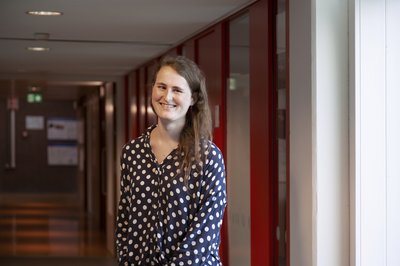Hilde’s work currently involves developing algorithms to identify what’s known as the shortest unique substring. “Given some sequence like DNA or text, we’re looking for a certain part of this sequence that occurs just once,” Hilde explains. In DNA, finding the shortest part of the sequence that meets this criterion enables certain genes to be more easily identified.
“There is a very simple algorithm that can perform this task in time proportional to the length of the sequence and uses fundamental techniques commonly taught in universities. But we’ve found a way to do this faster than would be intuitively possible - which is very interesting because it's a lot more complex, and it uses a lot of different techniques. We do this by basically taking advantage of the fact that in many applications, such as DNA analysis, we are working with alphabets that are very small - DNA has just four different characters.” In practice, that means these abstract algorithms can shorten the time it takes to find genetic disorders and abnormalities.
Constance van Eeden Fellowship
As a research institute for maths and science, rather than a university, there’s no teaching at CWI for PhD students. “For a PhD student, this means that a lot more focus can be given to research, and I think it's created a very nice atmosphere here,” says Hilde. She was the first recipient of CWI’s Constance van Eeden fellowship, which offers a female student a PhD position and is named after one of the first women to receive a PhD in statistics in the Netherlands. “It’s given me a lot of freedom to choose what I want to do within my PhD. I got to choose which research group I wanted to join and also choose my supervisor, which is how I ended up in this string algorithms group. But it also means I can work on projects that are outside of this research group, if I want to.”
Part of Hilde’s fellowship also includes mentorship from a CWI academic outside of her area of study. “She guides me through things that are not directly related to research, but are important to know when you're pursuing an academic career. I can go to her with any questions or problems I have,” she says. The Diversity, Equity and Inclusion team Hilde is a part of is pushing for this type of mentorship to be standard for all PhD students. “We are trying to guide the policy-making within the institute to create a more diverse, inclusive, and equitable academic world, and we believe this would really help students who are in some way disadvantaged.


